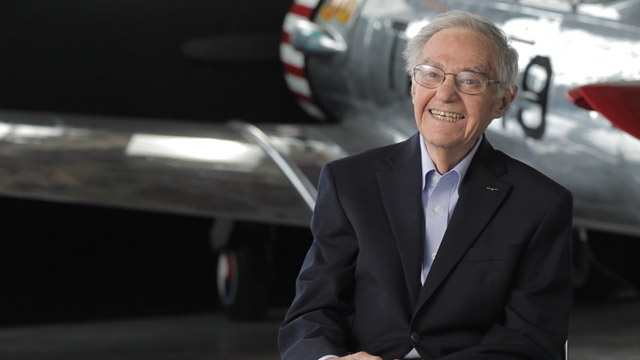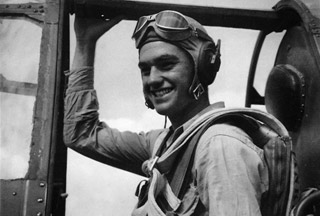
Fighting for a cause
Leon Frankel clearly remembers that phone call from New York. It was 1948, Israel had just declared independence, and five surrounding Arab countries invaded the next day. While Frankel stood inside his car dealership in Minot, North Dakota—Capitol Motor Sales—the disembodied voice asked him to join Israel’s air force with 25 Czech-built Messerschmitt Bf 109 airframes mated to older Heinkel He 111 bomber engines and props, bought in violation of the UN arms embargo—officially, the Avia 199. The pilots called them “The Mule.”
 “A great airplane, then the Czechs got ahold of them,” Frankel says. Within weeks he was flying one over the Negev Desert.
“A great airplane, then the Czechs got ahold of them,” Frankel says. Within weeks he was flying one over the Negev Desert.
“The irony didn’t escape any of us,” he says. “I was sitting in a German airplane with a German flight suit and a German helmet, thinking, What’s a nice Jewish boy from St. Paul doing in a place like this?”
A Navy pilot, Frankel first saw action in February 1945 flying a TBF/TBM Avenger over Tokyo. During the fight, a Japanese airplane hit his commander’s and damaged two of its three prop blades. “I pulled up beside him and escorted him back to the carrier,” Frankel says. “Over Okinawa a few weeks later he was killed in front of me when one of our own fighters ran into him. I can still feel the flames.”
Awarded the Navy Cross, Frankel had logged 25 missions when the A-bomb fell. Back home he joined the Naval Reserves, and with a partner opened a used-car-and-truck business. He took leave from both to join the fresh Israeli Air Force 101st squadron. “It wasn’t very sophisticated,” he says. “We had a transport section—C–54s, C–46s, and C–47s—that doubled as a bombing group, and one fighter squadron.”
He made it to 25 missions there, too. That October, “I chased an Egyptian Spitfire halfway to Cairo, when I realized I might not have enough fuel,” he says. Refueling in Tel Aviv, he saw oil leaking from under the cowling. “I called the mechanic, who fiddled around for 10 minutes and buttoned up the cowling. I took off leaving a smoke trail, and the engine started to run rough. I saw the oil pressure gage on zero. I’d never seen an oil pressure gauge on zero. I looked around for a place to land and I just made it over a huge pile of debris and skidded in on the belly.”
Walking west, he thought about a couple of pilots captured, tortured, and decapitated by Arab soldiers. He saw a truck with soldiers in it heading toward him. He jumped in a ditch and pulled out his revolver. The truck turned out to be Israeli soldiers, who drove him to a police station in the next town.
“And that was my last flight in Israel,” he says. Injured, he spent a week in the hospital, then he returned to Minot and the reserves—where he flew one weekend a month until he left the service in 1958. A friend in Minot let him use his Piper Cub when the flying bug bit again. Now 91, he is featured in the documentary film Above and Beyond: The Birth of the Israeli Air Force.
Logbook
Who | Leon Frankel, Naval aviator
Hours | 1,200
Favorite airplane | Cub, TBM, Spitfire—“anything but ‘The Mule’”
Recognition | Navy Cross, Distinguished Flying Cross (2), Air Medal (3), Presidential Citation (2)
Extra | “I loved aviation. I first had a flight in a Piper Cub. I paid two bucks and they flew me over the city. I was just thrilled about it. I thought, Oh, this is for me. I just want to get into aviation.”
Image on top: Playmount Productions, image top right: the pilot during World War II and the Battle of Okinawa.


